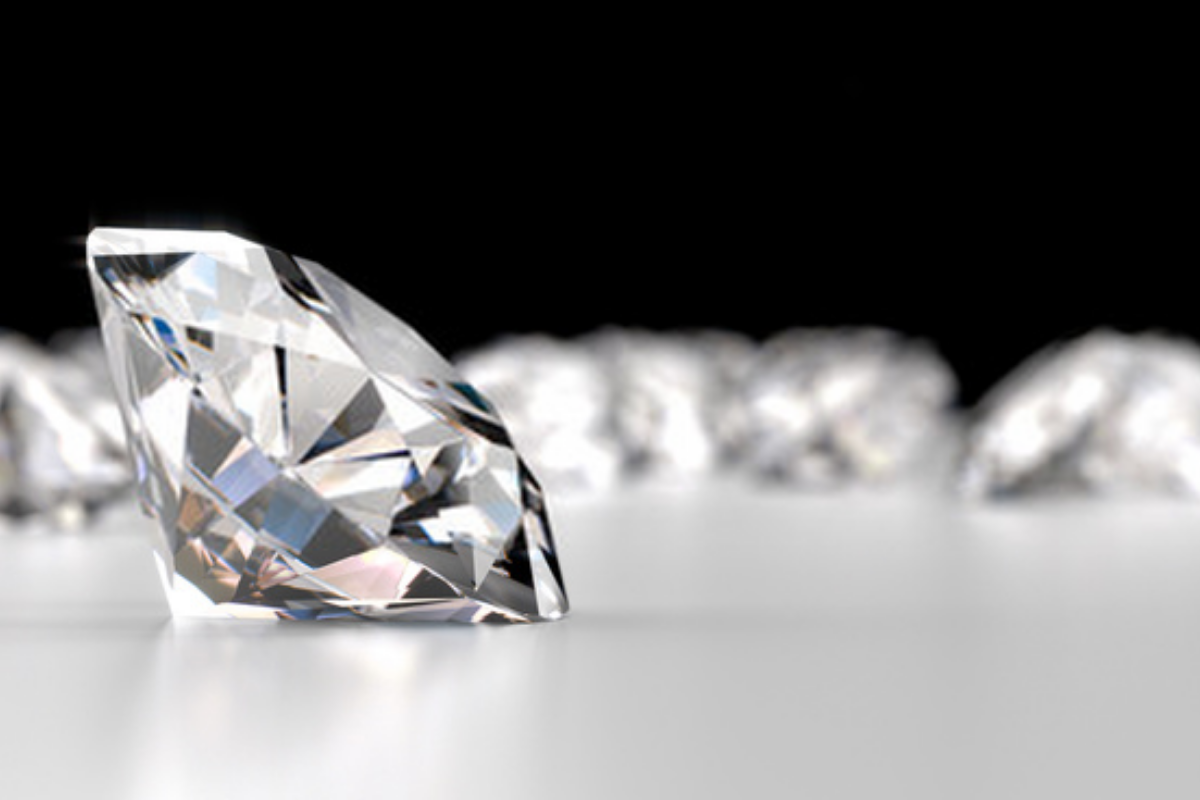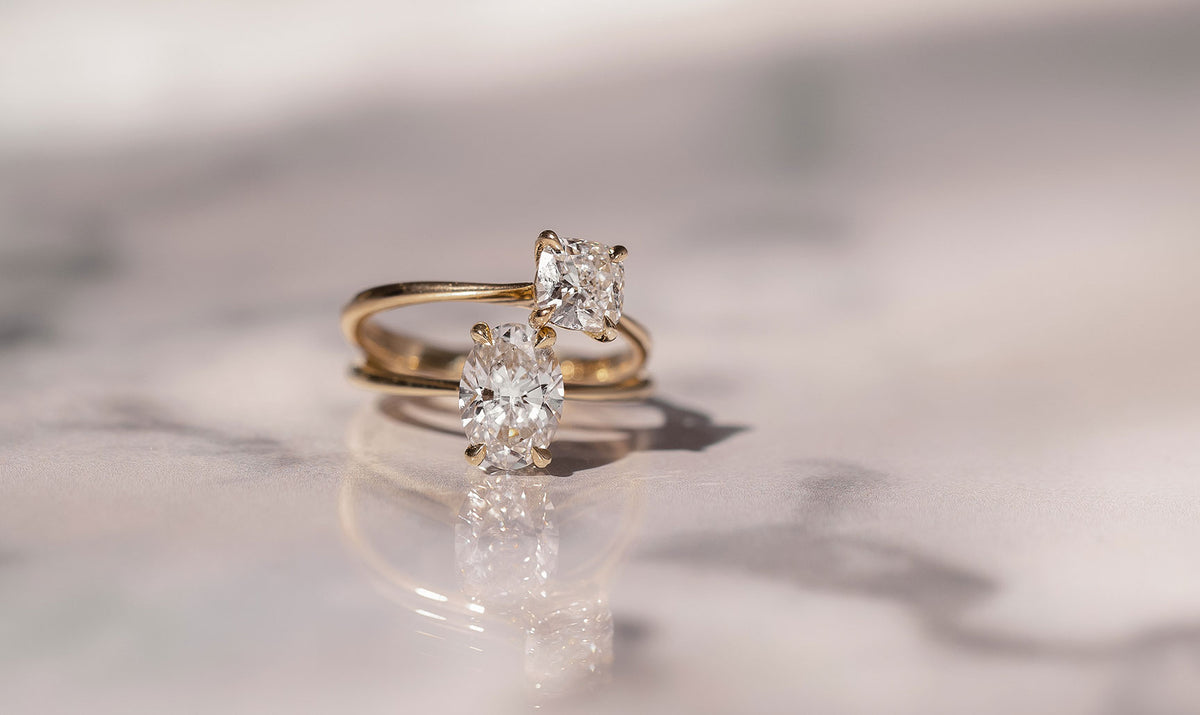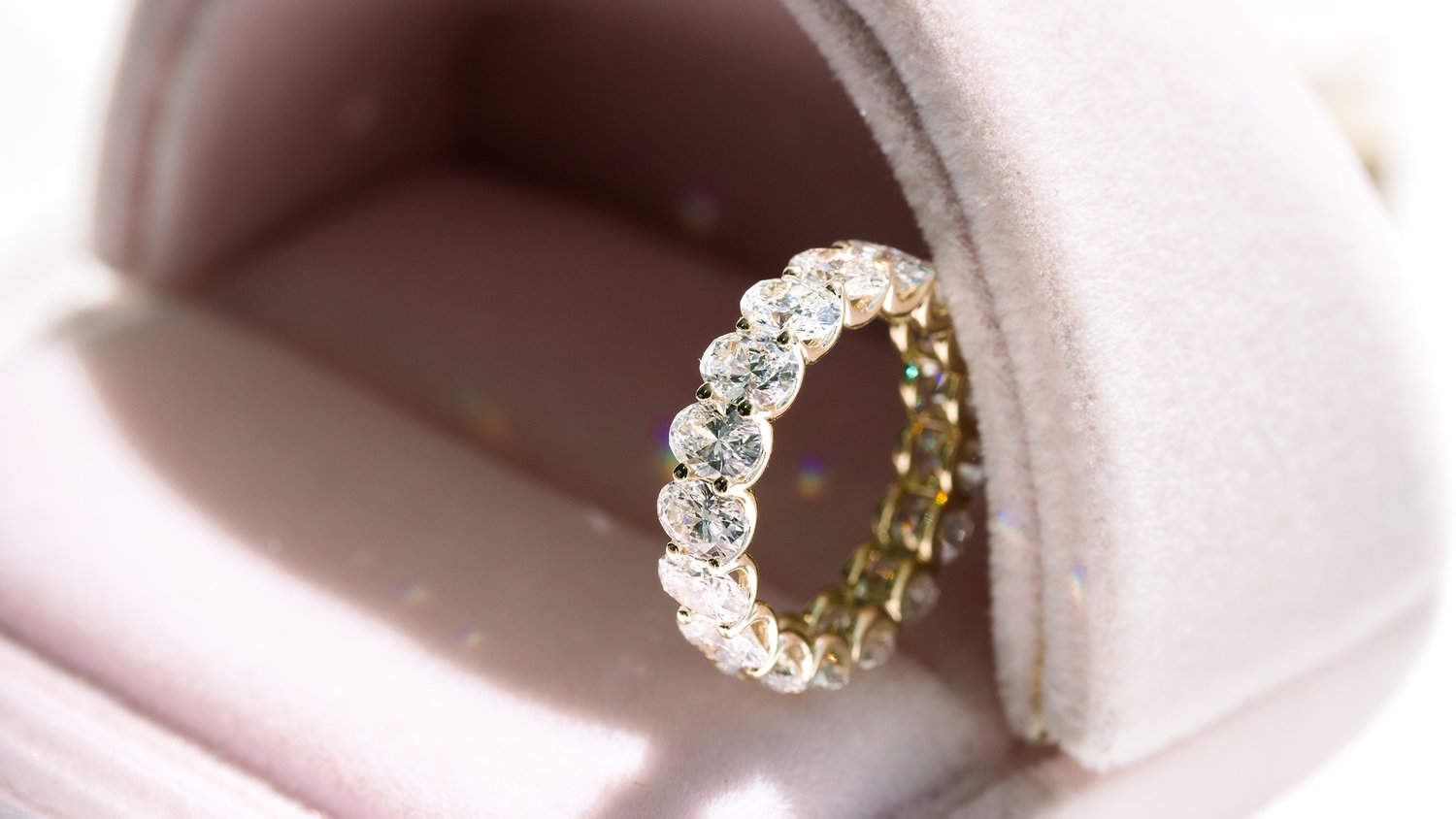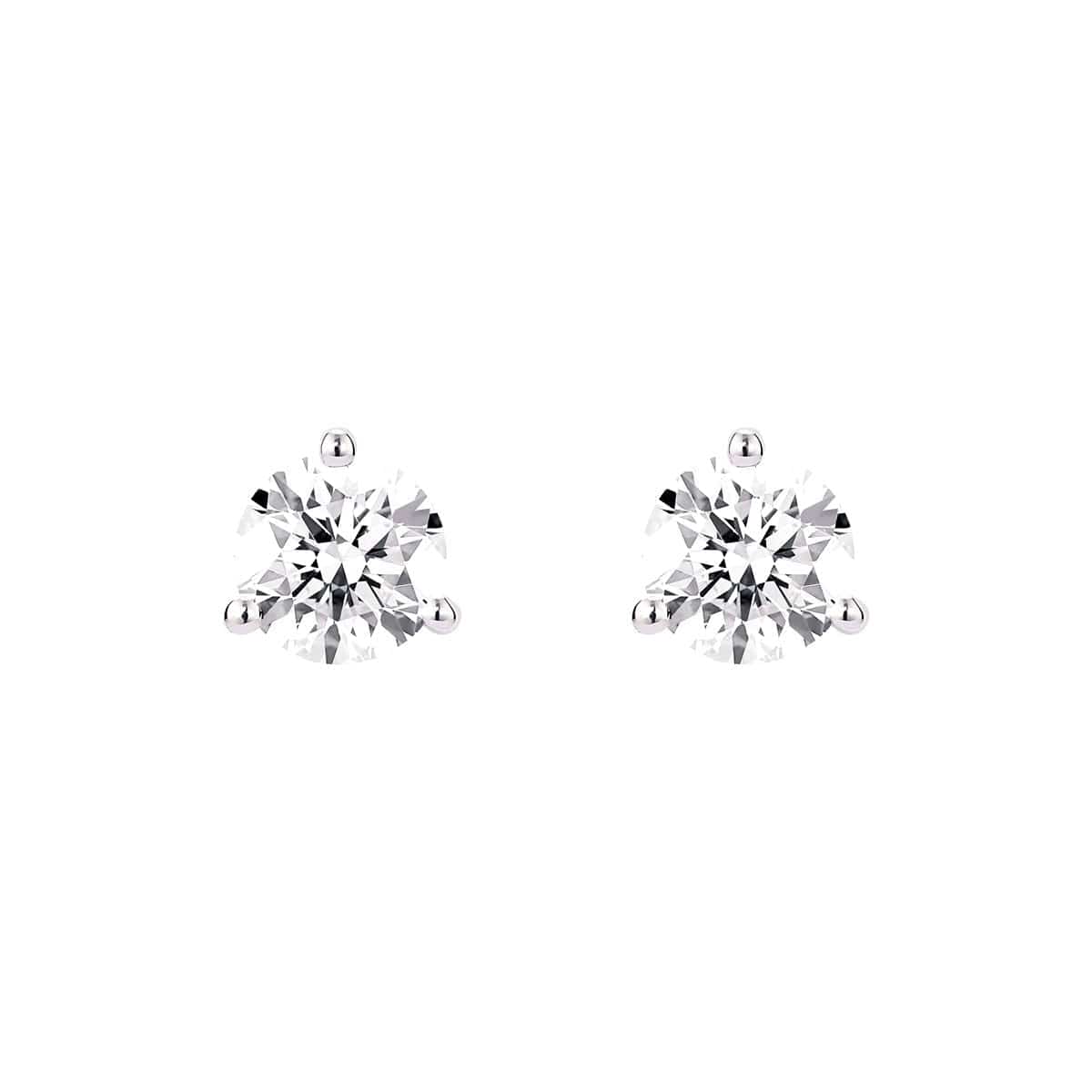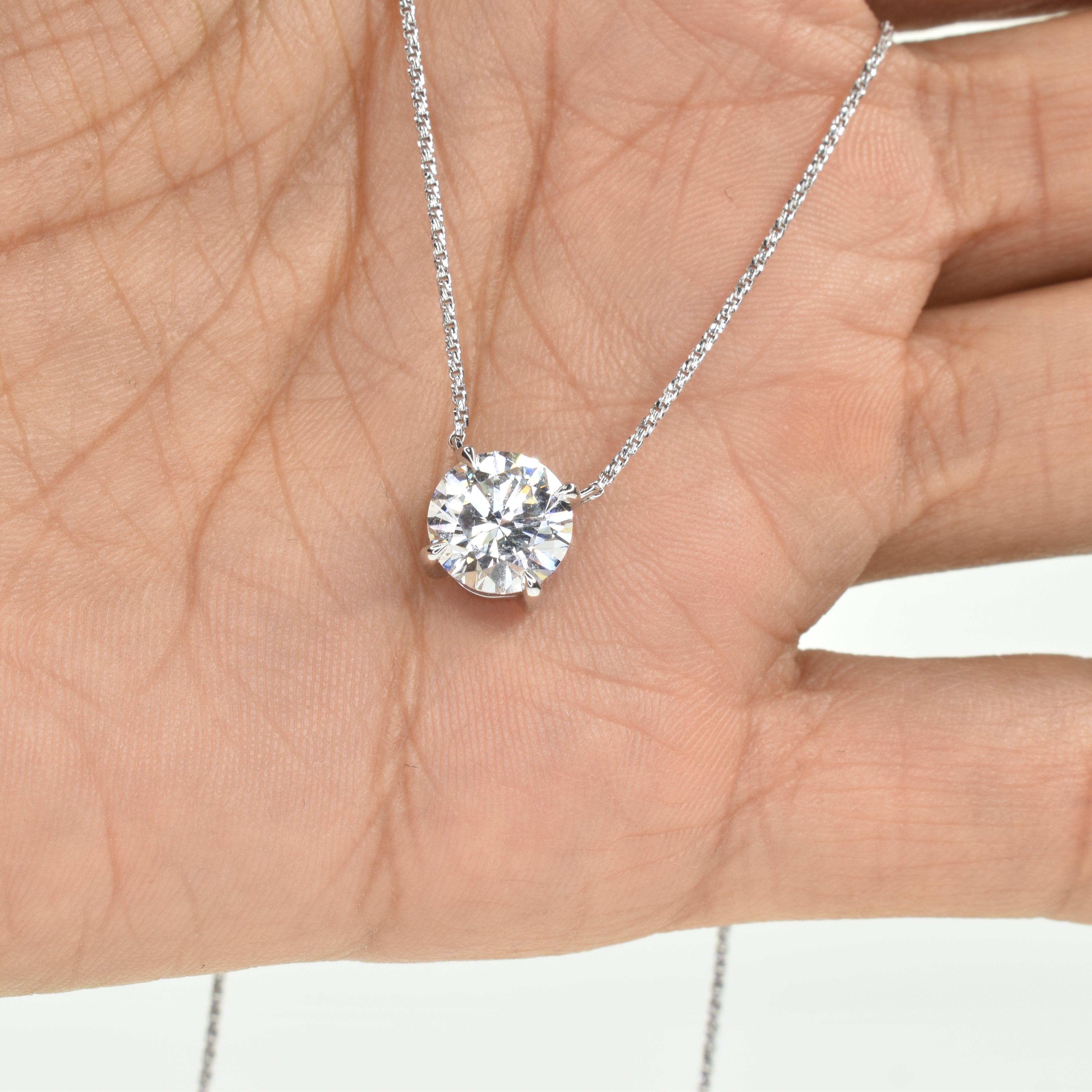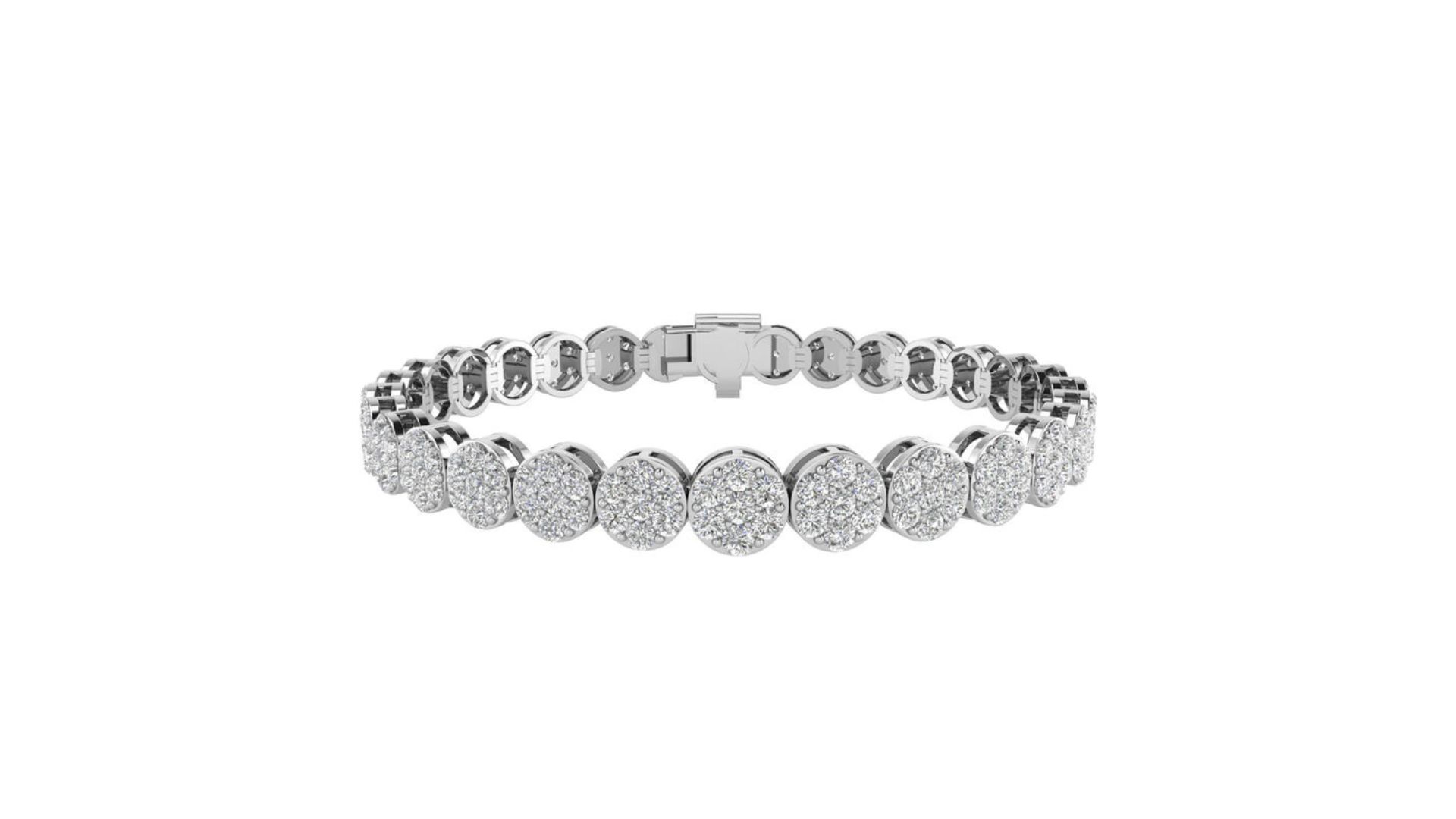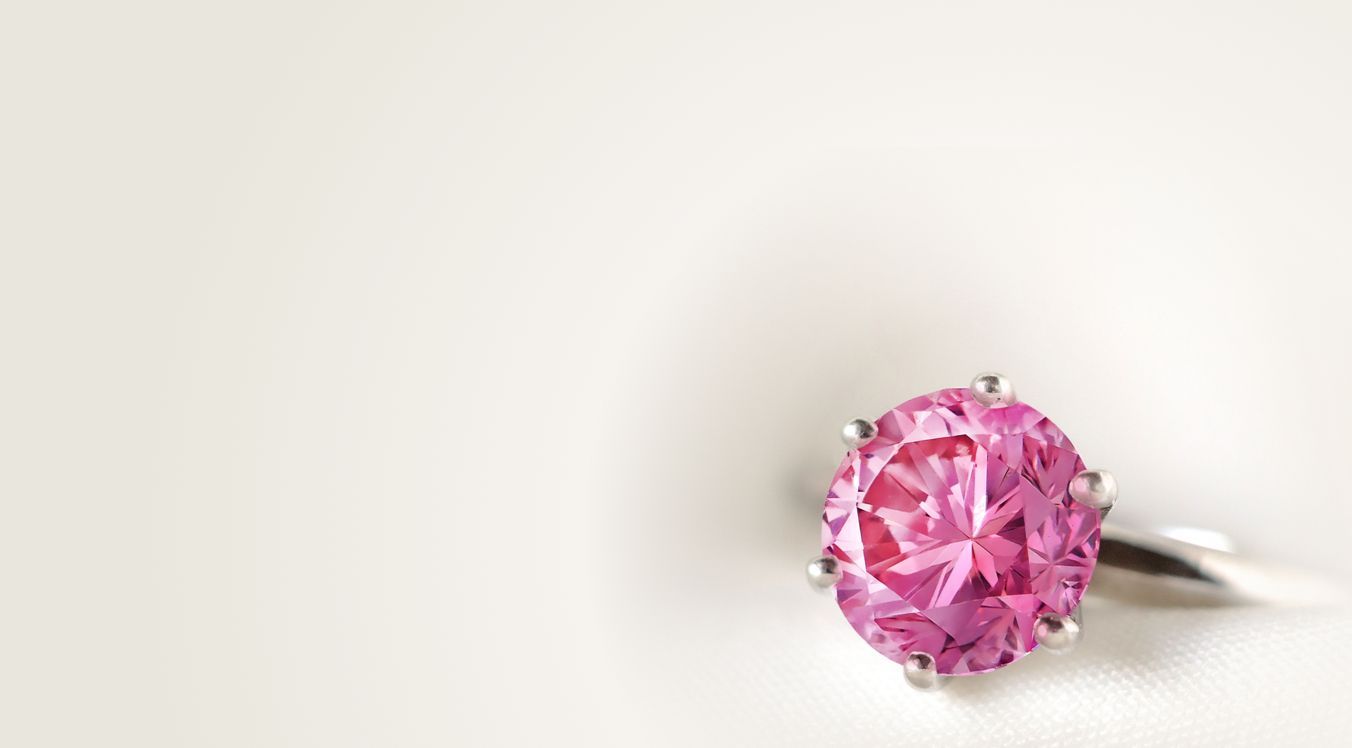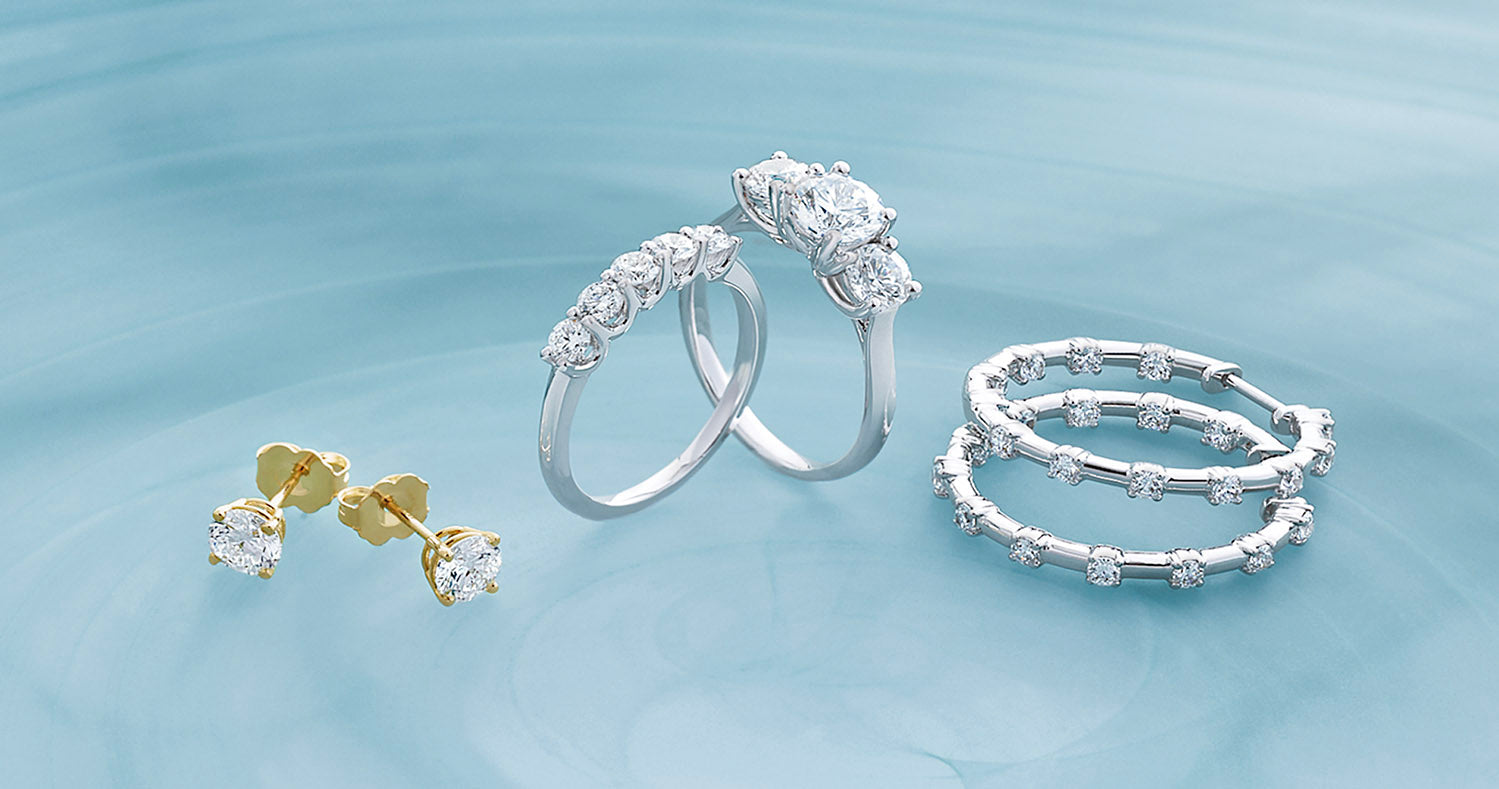
In a world where innovation continually reshapes the boundaries of possibility, lab-grown diamondjewelryemerges as a sparkling testament to human ingenuity. These exquisite gems, cultivated through cutting-edge scientific processes, captivate the discerning eye and the environmentally conscious heart.
Lab-grown diamondsrepresent a harmonious fusion of technology, ethics, and beauty, offering a dazzling alternative to traditional mined diamonds. This jewelry is not just a symbol of elegance; it's a symbol of progress, a shining embodiment of our capacity to reimagine and redefine luxury in the 21st century.
What Are Lab-Grown Diamonds?
Lab-grown diamonds, commonly called synthetic diamonds, are made in labs, as their name indicates. To understand this procedure, you must first comprehend the formation of diamonds in nature.
The First Lab-Grown Diamond
In 1797, researchers discovered that diamonds are made entirely of carbon. The competition to produce the first synthetic diamondwas sparked as a result. Many scientists throughout the 19th century tried to mimic the circumstances required for diamond creation in a lab environment. Despite several claims of success, scientists were unable to repeat these tests.
In 1954, GE produced the first diamond-like synthetic materials as part of a project with the secret designation "Project Superpressure." World War IIdelayed the development of this project, which started in the 1940s.
Scientists have been experimenting with different processes, temperatures, and pressures to create diamonds from carbon. Using a high-pressure belt press, they exposed tiny seed crystalsto pressures of 100,000 atm and temperatures of 1,600 C (2,912 F). They accelerated the conversion of graphite to diamond in this device by dissolving it in metals such as iron, nickel, and cobalt. Graphite is another material formed entirely of carbon.
The scientists thought they had succeeded when the resultant substance damaged their cutting equipment. Diamonds are renowned for their ability to erode and destroy metal instruments with a Mohs hardness of 10. They later acknowledged that they had created diamonds. Scientists, including Herbert Strong and Howard Tracy Hall, made this discovery.
Modern Methods
Nowadays, chemical vapor deposition is used to create the majority of lab-grown diamonds. This process involves heating a diamond seed with carbon gas within a chamber, which causes the carbon to adhere to the source and develop into a bigger diamond.
Chemical vapor deposition allows for creating giant, gem-quality diamonds and gives scientists better control over the characteristics of lab-grown diamonds. The procedure is significantly less expensive since chemical vapor deposition may occur at lower pressures and temperatures.
In the 1950s, the first patent for chemical vapor deposition was granted. However, it took scientists until the 1980s to perfect the procedure such that it could generate diamonds of gem quality. Since only one seed could undergo Chemical Vapor Deposition, it took much longer to make this procedure commercially viable. This cost a lot of money. Many seed diamonds may now go through Chemical Vapor Deposition at once.
List Of Top Lab-grown Diamond Jewelry
Lab-grown diamonds have revolutionized the jewelry world, offering an ethical, sustainable, and equally brilliant alternative to their mined counterparts. These gems, created through advanced technological processes in controlled laboratory settings, have overtaken the jewelry market.
In this article, we'll explore the top types of lab-grown diamond jewelry and highlight some leading brands that have embraced this eco-friendly trend;
Lab-Grown Diamond Engagement Rings
- Brilliant Earth- Known for its ethical sourcing, it offers a stunning range of lab-grown diamond engagement rings. Their classic solitaire rings, three-stone rings, and vintage-inspired designs have won the hearts of eco-conscious couples worldwide.
- James Allen- James Allen offers an extensive collection of lab-grown diamond engagement rings, including options with halo settings and intricate details. Their user-friendly website allows customers to customize their rings with ease.
- Clean Origin- Clean Origin specializes in lab-grown diamond engagement rings, offering classic and unique designs. They are committed to transparency and sustainability in the diamond industry.
Lab-Grown Diamond Wedding Bands
- Ada Diamonds- Ada Diamonds crafts exquisite lab-grown diamond wedding bandsfor both men and women. Their selection includes bands with various diamond shapes and settings to complement different tastes.
- Miadonna- Miadonna is renowned for its conflict-free lab-grown diamond jewelry, including wedding bands. They offer a range of designs, from simple and elegant to intricately detailed.
Lab-Grown Diamond Earrings
- Diamond Foundry- Diamond Foundry is a leader in creating lab-grown diamond earrings. Their stud earringsand elegant drops are favored by those seeking sustainable luxury.
- Aurate New York- Aurate New York offers a stylish collection of lab-grown diamond earrings, including hoops, studs, and more. Their commitment to ethical practices extends to all their jewelry.
Lab-Grown Diamond Necklaces
- Vrai- Vrai is known for its minimalistic lab-grown diamond necklaces, perfect for everyday wear. Their selection includes solitaire pendantsand delicate designs.
- MiaDonna- MiaDonna also offers lab-grown diamond necklaces, including stunning hearts and cross pendants, allowing customers to make a statement with their ethical jewelry choices.
Lab-Grown Diamond Bracelets
- Evermée- Evermée specializes in lab-grown diamond braceletswith a unique twist. They incorporate technology into their jewelry, allowing customers to display digital photos in their bracelets.
- Clean Origin- Clean Origin extends its ethical jewelry offerings to bracelets with lab-grown diamonds, including tennis braceletsand bangle styles.
The world of lab-grown diamond jewelry is a shining testament to human innovation, providing consumers with stunning and sustainable alternatives to mined diamonds. Brilliant Earth, James Allen, and Vrai offer many eco-friendly jewelry options. Whether it's an engagement ring, wedding band, earrings, necklace, or bracelet, lab-grown diamonds are transforming the jewelry industry, one brilliant gem at a time. Embrace ethical luxury and choose lab-grown diamonds for a sparkling future.
Transparency And Trust - Choosing Lab-grown Diamond Jewelry
In a world where consumers are increasingly conscious of the origin and impact of their purchases, the jewelry industry is facing a demand for greater transparency and trust. Lab-grown diamond jewelry is emerging as a frontrunner in meeting these expectations.
Transparency in the context of lab-grown diamonds refers to the open and detailed information about the diamond's origin, creation process, and characteristics. Unlike natural diamonds, where tracing the journey from mine to market can be challenging due to complex supply chains, lab-grown diamonds are known for their transparency.
Companies in the lab-grown diamond industry often provide comprehensive information about each diamond, including its laboratory origins, quality, and ethical sourcing. This transparency builds trust between consumers and the industry, allowing buyers to make informed purchase decisions.
Choosing lab-grown diamond jewelry goes beyond aesthetics and price; it reflects a conscious choice for sustainability, ethical practices, and responsible consumption. The transparency offered by the lab-grown diamond industry empowers consumers to select jewelry that aligns with their values.
They can confidently choose diamonds created in controlled, eco-friendly environments, free from the ethical concerns often associated with mined diamonds. Consumers can support an industry that prioritizes ethical practices, environmental responsibility, and full disclosure by opting for lab-grown diamond jewelry.
In doing so, they adorn themselves with exquisite gems and contribute to a more transparent and trustworthy jewelry market that meets conscientious consumers' evolving needs and expectations.
Reasons Why You Should Choose Lab-grown Diamond Jewelry Over Natural Diamonds
Lab diamonds, also known as synthetic diamonds, have grown in popularity and are now frequently used instead of mined diamonds. Natural diamonds are more in demand because of their rarity and the unlikely circumstances required to generate them. But there are advantages to lab-grown or artificial diamonds that could sway you to invest in them;
Lab Diamonds Are Inexpensive
Lab-grown diamonds are far less expensive than natural diamonds since the production process does not need several years, as it does for genuine diamonds. Given the high grade of the stones, they often retail for 30 to 40% less than mined or natural diamonds.
Lab-Grown Diamonds And Natural Diamonds Look The Same
Many people must know how difficult it is to tell natural diamonds from lab-grown ones. Since they have the same chemical structure, only skilled gemologists can distinguish between them with extensive testing.
Lab-Grown Diamonds Are Better For The Environment
You may learn that diamond mining can seriously harm the environment by doing a little investigation. As opposed to this, lab-grown diamonds are created in a controlled atmosphere with minimal to no environmental impact.
Lab-Grown Diamonds Go With Everything
Lab-grown diamond jewelry goes with everything, no matter what look you want. Lab-grown diamonds are perfect for everyday use; they reflect your individuality and allow you to express yourself, regardless of what you do. Additionally, they are easy to clean and highly durable.
You can complete your evening look for a businessevent with a classic pair of white studs. Or you can even add some pop of color with a souffle pink pendant or diamond earrings. So, if you want the look and feel of natural diamond jewelry at a reasonable price and a stylish cut, lab-grown diamonds are the right choice.
Lab-grown Diamonds Are Conflict-free
Concerns regarding the methods used to mine natural diamonds are common. Concerns over the harmful effects of raw diamond mining on people and the environment are becoming increasingly pressing. Jewelers are forced to state that their natural diamonds are ethically mined since more and more people are asking about this issue.
There is no doubt regarding the provenance of lab-grown diamonds because knowledgeable and trained specialists make them and they are less contentious.
The Versatility Of Lab-Grown Diamond Jewelry
Lab-grown diamonds captivate the jewelry world with their remarkable versatility, redefining how we perceive and appreciate these gemstones.
Dazzling
Lab-grown diamonds are not just beautiful but dazzling in their brilliance and sparkle. They possess the same physical, chemical, and optical properties as natural diamonds, making them equally radiant and captivating. Their intellect, fire, and scintillation make them perfect for exquisite jewelry that captures the light and hearts of those wearing it.
Diverse
Lab-grown diamonds come in various shapes, sizes, and colors, offering endless possibilities for creativity in jewelry design. From classic round brilliants to unique fancy cuts like hearts, ovals, and emeralds, these diamonds can be tailored to individual preferences and styles. Additionally, lab-grown diamonds can exhibit a variety of hues, from the traditional colorless (D-F) to fancy colors like blue, pink, and yellow. This diversity allows jewelry designers to craft unique pieces that cater to a broad spectrum of tastes.
Delightful
Lab-grown diamonds bring delight in more ways than one. First and foremost, they offer an ethical and sustainable choice for consumers who value responsible sourcing and environmental consciousness.
Knowing that their jewelry contains diamonds created in controlled, eco-friendly laboratories brings a sense of satisfaction and delight. Furthermore, the affordability of lab-grown diamonds compared to their natural counterparts allows consumers to indulge in delightful jewelry experiences without compromising on quality or budget.
The versatility of lab-grown diamonds is transforming the jewelry industry, creating stunning pieces that are beautiful and aligned with modern values and preferences. Whether you're seeking a dazzling engagement ring, a diverse collection of gemstones for your jewelry box, or a delightful gift for a loved one, lab-grown diamonds provide an exciting and ethical option that continues to shine brightly in the jewelry world.
Lab-grown Diamond Jewelry - FAQs
Are Lab-grown Diamonds Worth It?
For many reasons, the value of lab-created diamonds declines with time, which has a detrimental effect on their resale value. Natural diamonds are limited in supply; thus, they will hold their worth throughout time, unlike manufactured jewels, which do not.
Which Jewelry Brands Use Lab-grown Diamonds?
Blue Nile, one of the most well-known online stores, provides ready-to-ship items and personalized creations and is known for lab-grown diamonds and beautiful jewelry. Since its inception in 1999, they have strongly emphasized providing customers with explicit jewelry knowledge and pricing.
Can A Jeweler Identify A Lab-grown Diamond?
Using sophisticated tools, diamond certificates, and laser-inscribed marks, lab-grown diamonds may be found. While not failsafe, these procedures are often dependable and can provide customers peace of mind when buying lab-grown diamonds.
Do Lab Diamonds Last Forever?
This implies that if properly cared for, a lab-created diamond will last a lifetime and beyond, precisely like a mined diamond. This entails keeping your ring clean and safeguarding it from chemicals and lotions, just like you would with a mined diamond.
What Is The Disadvantage Of Buying Lab-grown Diamonds?
Chemically, lab-grown diamonds and mined diamonds are identical. Although they are more economical, their worth will only last a while. A natural stone produced over billions of years deep in the ground would never have the same rarity, uniqueness, or significance as one of these things.
Conclusion
Lab-grown diamond jewelry has not only captured the hearts of environmentally conscious consumers. Still, it has also become a symbol of innovation and ethical luxury in fine jewelry. The dazzling brilliance and ethical sourcing of these diamonds have propelled them to the forefront of the industry.
Brands like Brilliant Earth, James Allen, and Vrai have embraced this sustainable revolution, offering a wide range of stunning options for engagement rings, wedding bands, earrings, necklaces, and bracelets. With lab-grown diamonds, customers can adorn themselves with exquisite pieces that sparkle with beauty and conscience, paving the way for a more sustainable and responsible future in jewelry.
